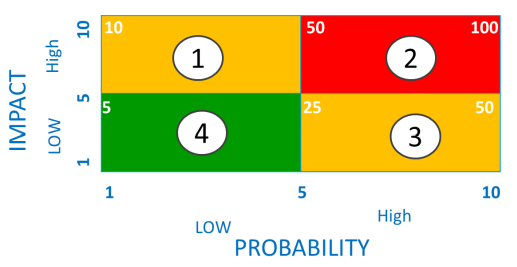
Project Risk Analysis

-
Apart from the Lean Six Sigma
team, there are external factors that
may play a role in the successful
execution of the project. These are
calledProject risks.
-
The formal definition of risk is an
event or occurrence that may
negativelyimpactthe project.
-
Risks can be mitigated and even
prevented. However, this requires a
good amount of understanding of
the risks and advance planning.
-
For this reason, the DMAIC
methodology in Six Sigma has risk
assessment as an inbuilt step. You
cannot ignore it if you truly follow
the DMAIC philosophy.
-
Project Risks are as follows
- Stakeholder Risk: Arises from
the fact that stakeholders may not
have the inclination, or the
capabilities required to execute the
project. Stakeholders could be
regulators, customers, suppliers,
managers, customers, etc.
- Technology Risk: Organization
may not be in a position to acquire
the technology as required by the
project, or the current technology
on which the project is being done
might become absolute.
- External Risk: The project
execution might require help and
support from external sources
(vendors, customer). The
organization may have very little
ways to predict issues arising from
external sources.
- Execution Risk: The project also
faces the risk of not receiving
continued support from the
organization either from the
management or from the people
who anticipate negative impact
because of the project
- The Project Risk Assessment needs to
be completed in the Discovery or
Define phase .
- It is to ensure that people
implementing the project have given a
thought to what can possibly go wrong
& identify a mitigation plan
-
Step by step to prepare the Project
Risk Assessment Matrix:
1. List down the Risks
This is usually done in a brainstorming
session. Participants are typically given a
list that contains common categories of
risks. The participants are then advised
to think if they can foresee a risk in any
category. This is done over and over
again to ensure that the list is exhaustive.
2. Rate for Probability and Impact
The risks are rated on two
parameters probability of occurring
& impact of occurring. Scores are
given to both the parameters & are
then multiplied & arranged in
descending order
3. Classify the Risks
The risks are classified into the
following four categories
4. Decide on Mitigation Planning
Steps identified to mitigate risks
of more than 25 (categories 2,1 &
3) either by reducing the
Probability or Impact or both

